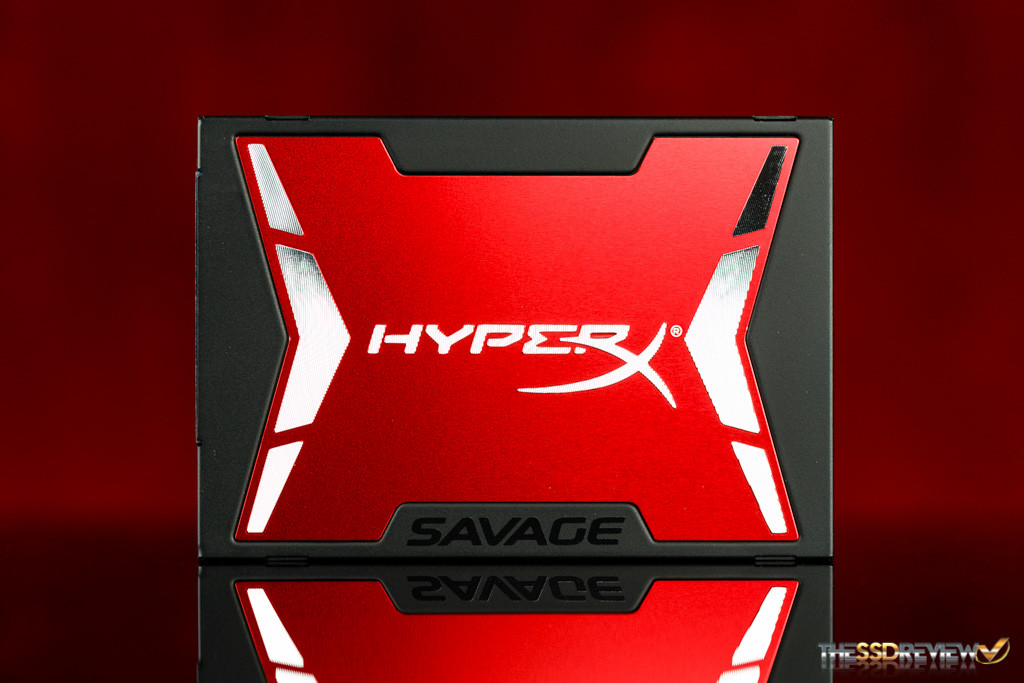For his week’s SSD of the Week we turn to Kingston, a well-established maker of memory products for over 25 years. Furthermore, Kingston has been the world’s number-one memory module manufacturer for the third-party memory market for over 10 years. Kingston’s HyperX line of products bring forth both the high performance and looks that gamers and enthusiasts demand. The HyperX Savage is no different, with its up to 560MB/s read speeds and killer design it should entice many.
The Kingston HyperX Savage comes in a 7mm 2.5” SATA III form factor and is available in the 120GB ($63.99), 240GB ($91.99), 480GB ($194.99), and 960GB ($459.31) capacities. This SSD uses a Phison S10 controller which we haven’t seen many companies use even though it has features such as end to end data path protection, Smart ECC to recover uncorrectable errors, and support for TLC NAND. Furthermore, the HyperX Savage uses Toshiba A19 64GBit MLC NAND Flash. The sequential read speeds are rated for up to 560MB/s and write speeds for up to 530MB/s. Also, the IOPS rated speeds reach up to 100K IOPS read and 89K IOPS write. However, the 120GB capacity has a slightly lower write speeds with its upper limits at 360MB/s for sequential write and 84K IOPS for random write. In line with Kingston’s other SSDs the HyperX Savage has great write endurance. The 120GB model is rated for up to 113TBW, the 240GB model up to 306TBW, the 480GB model up to 416TBW, and the 960GB model is rated for up to 681TBW. This SSD comes with a standard 3-year warranty that most SSDs are packaged with.
Kingston also offers a hassle free all-in-one kit to make the installation of your new SSD a breeze. It includes an Acronis True Image HD key, 2.5″ to 3.5″ adapter, 7mm to 9.5mm spacer, a screwdriver, extra screws, a SATA cable, and a USB 3.0 to SATA enclosure.
For a more detailed look at the Kingston HyperX Savage check out our report here.
If you want a good-looking SSD as well the tools to swap your information and install the SSD into your system….
Check out the Kingston HyperX Savage SSD at Amazon Today!
 The SSD Review The Worlds Dedicated SSD Education and Review Resource |
The SSD Review The Worlds Dedicated SSD Education and Review Resource | 


Does anyone know the difference bettween the Toshiba nand used in the (hyperx savage, corsair neutron x, q series pro, and original ssdnow v300)?
This guy does a decent job of tracking that type of info.
johnnylucky.org/data-storage/ssd-database.html
Understandably he is non-committal about the V300 but I’m pretty sure it was originally 19nm Toggle before the transition to the 20nm Micron Async or whatever it was that showed up on the Kingston loading dock.
I’m pretty sure V300 got another nand switch after the 20nm sync fiasko.
Because the last time i benched one of those 120GB puppies, it pulled ~4
460MB/s read and ~125MB/s write. No achievable on 20nm async.
Maybe 16nm micron async ?
Here is the proof
https://shrani.si/f/2n/10a/3buWxLUs/zajeta-slika.png
Yes I too have noticed their insane floating BOM and what I meant to say was “…and then whatever it was that showed up…”. A while back I spent some time perusing ssd.userbenchmark.com to see if I could discern any hidden bargains matching up the firmware with performance and decided that it was fools mission. It’s much less work just to buy from one of the many other companies that do not play games.